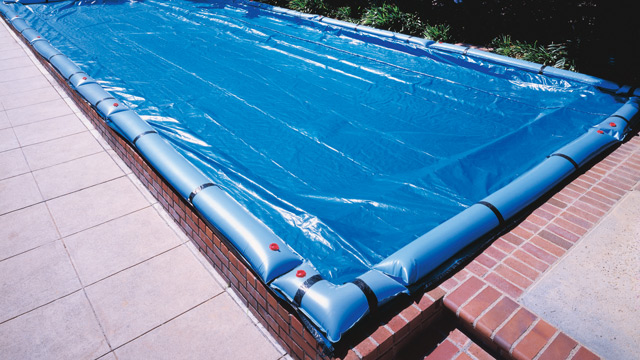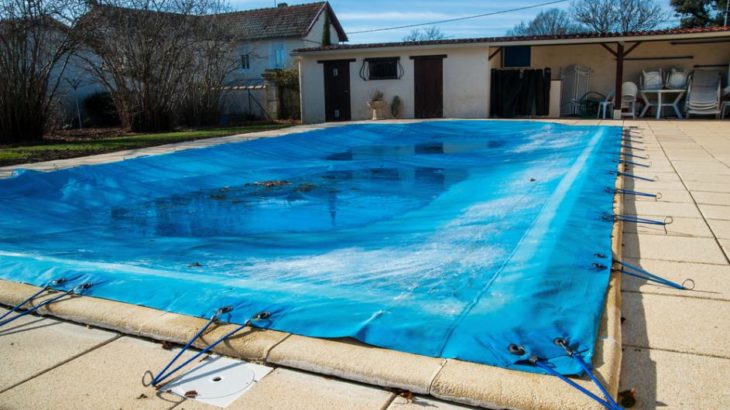With winter setting in the southern hemisphere, we are always getting ready to make this winter more comfortable and bearable. While the indoors are safe to stay in, the outdoors tend to be more neglected especially if you have a swimming pool. Closing a pool for the winter months can be a daunting task. And by daunting, we mean that (for the average person) it’s not the most fun thing to do on their to do list.

There’s a lot of work that goes into closing a pool and that includes things like:
Step 1 in closing a swimming pool:
Adjust pH levels, calcium hardness, and alkalinity (fancy stuff, eh?)
By ensuring that your pH levels, calcium hardness, and alkalinity in are balance, you’re protecting your swimming pool investment from corrosion or scale build-up that can occur over the winter while the pool is closed! These adjustments can be made a few days before your completely close the pool.
Adjust the pH to between 7.2 and 7.8
Adjust the alkalinity to between 80 and 120ppm (that’s fancy talk for parts per million)
Adjust the calcium hardness to between 180 and 250ppm
Step 2 in closing a swimming pool:
Shock the water with Chlorine
You can use either chlorine or a non-chlorine substitute to kill bacteria that may be living the in pool (yup… it’s in there!) Make sure to get a shock treatment that’s at least 65% sodium hypochlorite or a non-chlorine substitute of equal strength. Fill a 5-gallon pail with pool water, add the instruction amount of treatment, and pour it into the pool while the filtration system is running.
If the shock treatment is “safe for people to swim in right away” it’s probably not strong enough to kill all of the bacteria in your pool; so, since you’re not going to be swimming in it (because you’re closing the swimming pool) use the stronger stuff.
Don’t add the water to the shock treatment, add the shock treatment to the water (trust us on this one)
Allow the chlorine level to get back to 1 to 3ppm over a few daytime spans before getting to the next step during the pool season when it’s in use. The stronger algaecide is meant to prevent algae from blooming all winter long
Step 3 in closing a swimming pool:
Clean the pool
Get rid of anything in the pool that isn’t H2O (water). Ladders, baskets, pumps, heaters, decorations, filters, hoses…
Hose off all the pool equipment and lay it out to dry before you store it.
Skim it (not the milk, the pool).
Vacuum and brush the swimming pool. Do this stuff the same day that you close it to keep more debris from falling in

Step 4 in closing a swimming pool:
Lower the water level and drain all the equipment.
Use a pump to lower the water level. It should be lower than the skimmer (this depends on the type of swimming pool cover you’re using).
For a mesh cover, the water should be 12-18 inches below the skimmer.
For a solid, floating cover, the water should be 3-6 inches below the skimmer.
Drain the equipment (pumps, heaters, chlorinators, filters…). If water freezes in there, it could damage it.
Open all the drains on the equipment and let the water out
Take the filters off and clean them thoroughly before storing them in a dry place inside for the winter
If you can’t take the filters out, use a shop vac or an air compressor to blow the remaining water out of them
Step 5 in closing a swimming pool.
Winterize the plumbing
The lines running water into the pool need to be dry so that they don’t freeze up and crack over the winter
Use a shop vac to blow air from the skimmer through the equipment and back into the pool. Use the expansion plugs to plug the lines so that more water doesn’t enter them
If you choose not to blow out the lines, you can add swimming pool anti-freeze to them to prevent remaining water from freezing, but make sure you follow the instructions (as with any and all of this stuff!)
Step 6 in closing a swimming pool.
Apply the pool cover
Make sure the cover you’re using is made for your pool! If it leaves gaps debris can enter the pool over the winter and cause issues later.
Mesh safety covers are your best bet
Solid floating covers don’t fit as tightly, so you may have to pump out rainwater and other debris that get into your pool over the winter
Use water bags or aqua blocks to make sure that the cover is secured as tightly as possible
Have trees around your pool? Get a leaf net to put over it and catch debris
Air Pillows are used to prevent the expansion of ice in above ground pools (for those of you with in ground pools, you don’t need these)
Inflate the air pillows with a leaf blower or shop vac and tie them in the centre of the pool (if you have a big pool you may need more than one)
If you are looking for a professional swimming pool contractor, then check on this company Leak Inc. It you’ve made it this far, you’ve done it! Congratulations and check back to see how to open your swimming pool when the time comes. See you soon and have a great winter!



















